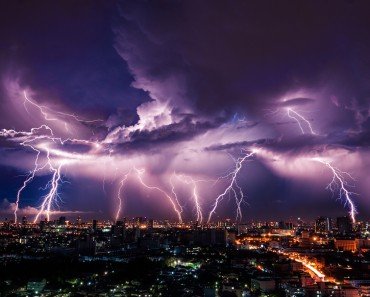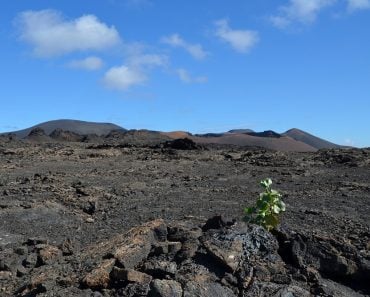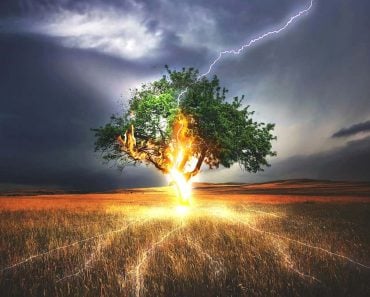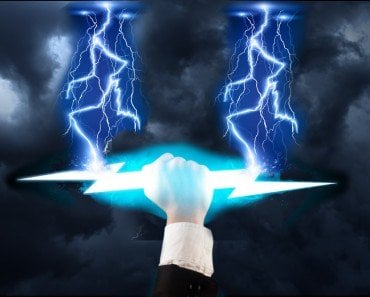Table of Contents (click to expand)
Volcanic lightning is caused by the friction of particles inside the ash plume that is ejected by the volcano when it erupts. A bolt is seen when charges separate.
Imagine a booming roar of thunder against the backdrop of a violet sky. The lightning cuts through the air with its tendrils creeping in all directions. All of this begins to happen just after an active volcano erupts and spews out lava, as though it is a chain reaction! This sounds like a scene from a movie with an apocalypse on the horizon, but it can happen in real life too! The question is… are lightning and volcanic eruptions related? If so, how?
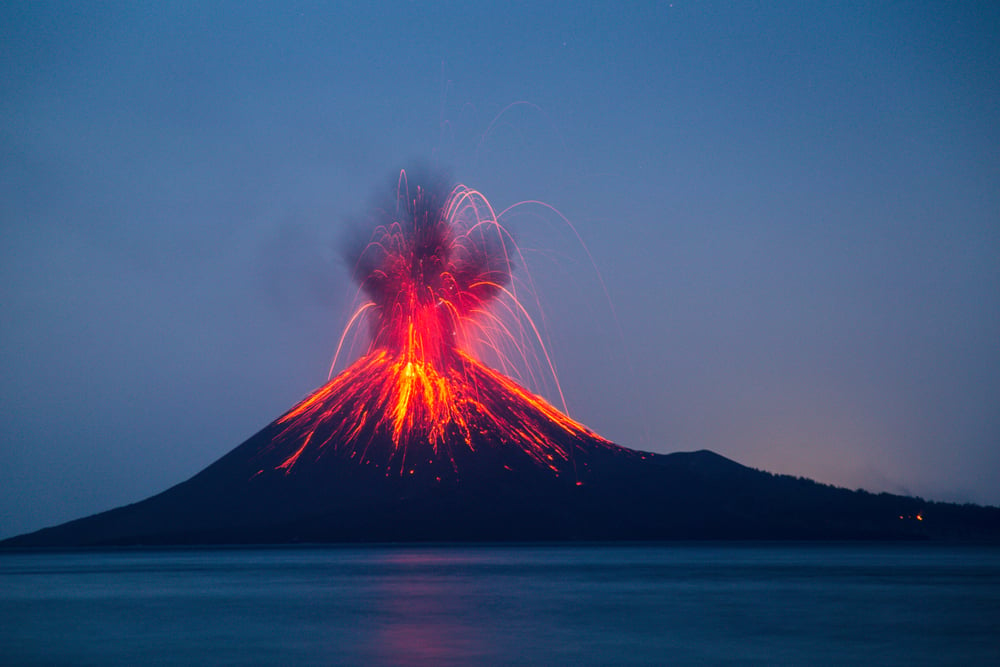
Lightning often follows a volcanic eruption due to the friction between particles of the dense ash clouds that are formed as a result of the eruption. When the particles rub together, the charges inside the ash clouds begin to separate. The resulting charge buildup generates lightning strikes, which look like something straight out of a nightmare. Sometimes ice and freezing temperatures can also contribute to volcanic lightning.
Recommended Video for you:
What Are The Constituents Of Volcanic Ash?
Throughout this text, you will keep reading about ‘material that gets ejected from the volcano’, but what exactly is this material that contributes to lightning?
Magma
In simple terms, the rocks that are melted inside the volcano—due to extreme pressure and very high temperatures—get ejected when the volcano erupts. These molten rocks are commonly referred to as magma.
Magma not only contains liquid rocks, but it also contains crystals and some dissolved gas expelled from the earth’s interior when the volcano erupts. These gases include water vapor, carbon dioxide, and minor amounts of chlorine, sulfur, and fluorine.

Ash Plume
When the magma comes out of the volcano, it quickly cools down and forms ash. Given that the amount of magma is so great, the amount of ash that forms is also massive. This results in the formation of a cloud solely made of ash, better known as the ash plume. The collision of particles in these ash plumes results in charge separation. When the charges take their positions in their respective areas in the cloud, a bolt occurs.
How Does Lightning Occur?
To understand this phenomenon, let’s brush up on a few high-school concepts. To begin with, have you ever noticed the formation of sparks when you take off your sweater in the winter? This surprising phenomenon is because of static electricity.
Static electricity is an imbalance of electric charges within or on the surface of a material. Another famous example is that of a ruler; when you rub it on your hair, it becomes capable of attracting bits of paper!
Something similar happens when lightning strikes, but on a much bigger scale. When the ground is hot, the air above it also gets heated, and this warm air rises upwards. As the hot air rises further, the water vapor cools and forms a cloud. If the air continues to rise, the size of this cloud continues to grow. As such, the top region of the cloud may be below freezing temperature, which makes the water vapor convert to ice. Lots of tiny bits of ice rub against each other and accumulate charges.
When the entire cloud is filled up with charges, they begin to separate. The positively charged lighter particles rise upwards, while the negatively charged and more massive particles sink downwards. As the common saying goes, ‘negative and positive charges attract’. Therefore, the negative charges from the cloud tend to move towards the positive charges of the earth.
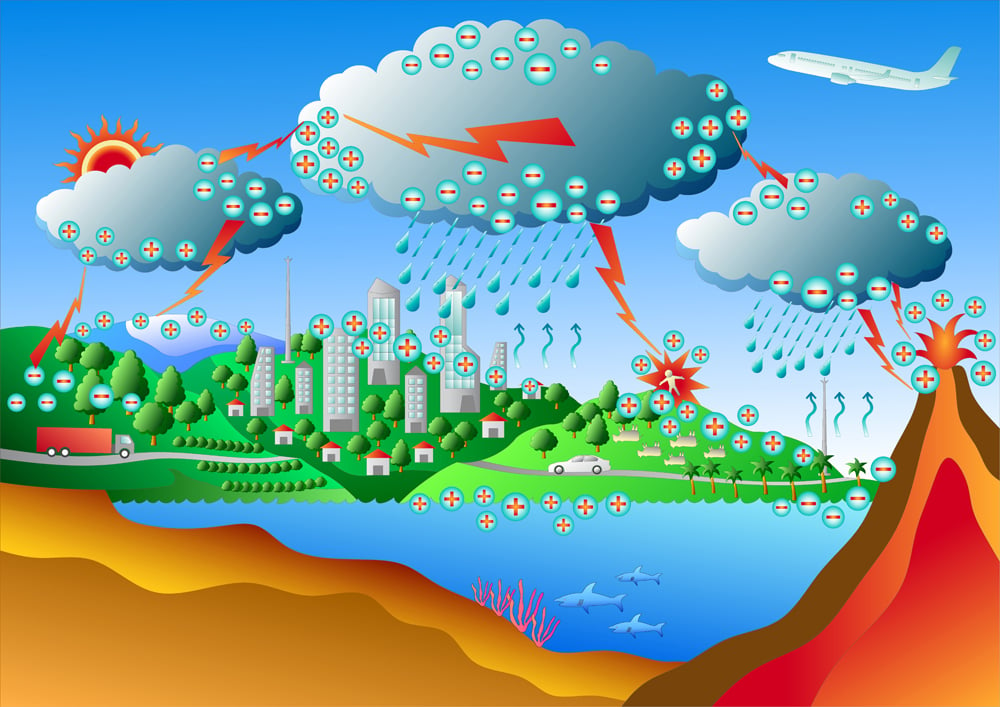
In most circumstances, the insulating capacity of the air stops the formation of a lightning bolt, but when the charge buildup overcomes this insulating capacity, we see a lightning strike!
How Do Volcanic Eruptions Cause Lightning?
Now, let’s get back to our original question! Lightning is a common occurrence in the rainy season, but what makes it appear when a massive volcano decides to erupt? Well, it’s actually the ash clouds that cause this phenomenon.
According to scientists, the material that eventually gets charged to produce lightning comes from the volcano itself. Moreover, the friction between the particles in the ash cloud also contribute to this charge buildup.
Eruption Phase
The entire process of volcanic lightning takes place in two phases. The first phase is known as the eruption phase, which is initiated soon after the volcano erupts. The volcanos throw out positively charged particles that cause this lightning.
Plume Phase
The next phase is the plume phase. This occurs when particles rub against each other inside the ash plume formed in the atmosphere.

As such, we can say that two factors cause volcanic lightning—the materials ejected from the volcano and the particles inside the ash cloud.
Conclusion
Did you know that the temperature of a lightning bolt is roughly five times the temperature of the sun’s surface? Shocking, I know… it seems like everything about the everyday phenomenon of lightning is incredibly exciting!
The only thing that you need to remember is that lightning, anywhere on the planet, occurs due to the collision of particles, which results in charge separation. In storm clouds, the collision is between ice particles. On the other hand, in the case of volcanic eruptions, the collisions take place between the particles bouncing around in the rising ash plume!


